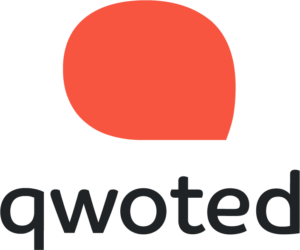Qwick Takes: How can AI tools and robots help address the crisis of burned-out health care workers?
This week, Talking Biz News Deputy Editor Erica Thompson reached out to Qwoted’s community of experts to inquire about the demand for healthcare is increasing worldwide, but supply of health workers is dwindling. How can AI tools and robots help solve the crisis?
Check out some of the top commentary:
Pranay Kapadia, Co-Founder & CEO at Notable Health
At a time where our healthcare system is stretched to its limits and hospitals are struggling with labor shortages and nurses are feeling overburdened, intelligent automation can transform any part of healthcare that currently relies on humans to perform repetitive tasks, whether that be claims adjudication, care gap outreach, or patient registration.
Using AI, Notable automates administrative tasks that often burden physicians, such as creating clinical documentation or adding billing codes. By automating across the care continuum for patients, providers and staff, Notable enables comprehensive digital transformation of every healthcare workflow, modernizing how patients receive care.
Sareer Zia, Founder at Virtual Hospitalist
Recent data from various professional societies continue to forecast an increasing healthcare professional shortage in the next 5 to 10 years which is going to be further intensified with an aging population. The pandemic led to a higher turnover of healthcare professionals. However, we did see a little silver lining. COVID-19 served as a catalyst of healthcare transformation ushering it in a new digital era. Whether it is the remote care increasing the capacity of existing healthcare task force or the new AI technology improving the turnaround time of CT scan reads in areas with limited access to radiologists or predictive algorithms enhancing the diagnostic accuracy of tests when combined with the expertise of clinicians or the conversational bots taking on some of the tasks of healthcare professionals reducing their administrative burden, technology is tackling these challenges from different angles.
Joseph Rubinsztain, CEO at Chronwell
1- Apply machine learning models to detect potential diagnoses; by automating intake through an app or kiosk, for example, can take paperwork time away from an actual visit, as AI routes the patient to the correct provider and points more accurately to care needs, saving time and potential exposure.
2- Use sensors to improve diagnostic accuracy; this includes image recognition, voice recognition, text-to-speech, and optical character recognition, to save time in processing information and recognizing symptoms, among other things.
3- Use conversational AI and machine learning to deliver and adjust care based on published medical evidence with minor care team disruption.
Annie Haarmann, Head of Strategy and Consulting, Healthcare at Reputation
Most organizations are surveying employees to learn more about their experience, but a specific type of AI called “natural language processing” can be used to better understand the “Voice of the Employee,” identify negative and positive trends, and pinpoint where and how to deliver a better employee experience for health care workers.
AI can also be used to deliver targeted individual support to address professional and emotional needs based on employee feedback. For example, an interactive survey could use predetermined logic to deliver personalized resource recommendations based on keywords. So, if a nurse mentions in a survey that she is feeling burned out, that could trigger an outreach from the EAP or other support resources.
Check out the original blog on TalkingBizNews.
Ready to submit your request for commentary?
POPULAR POSTS
LATEST ARTICLES
CATEGORIES
